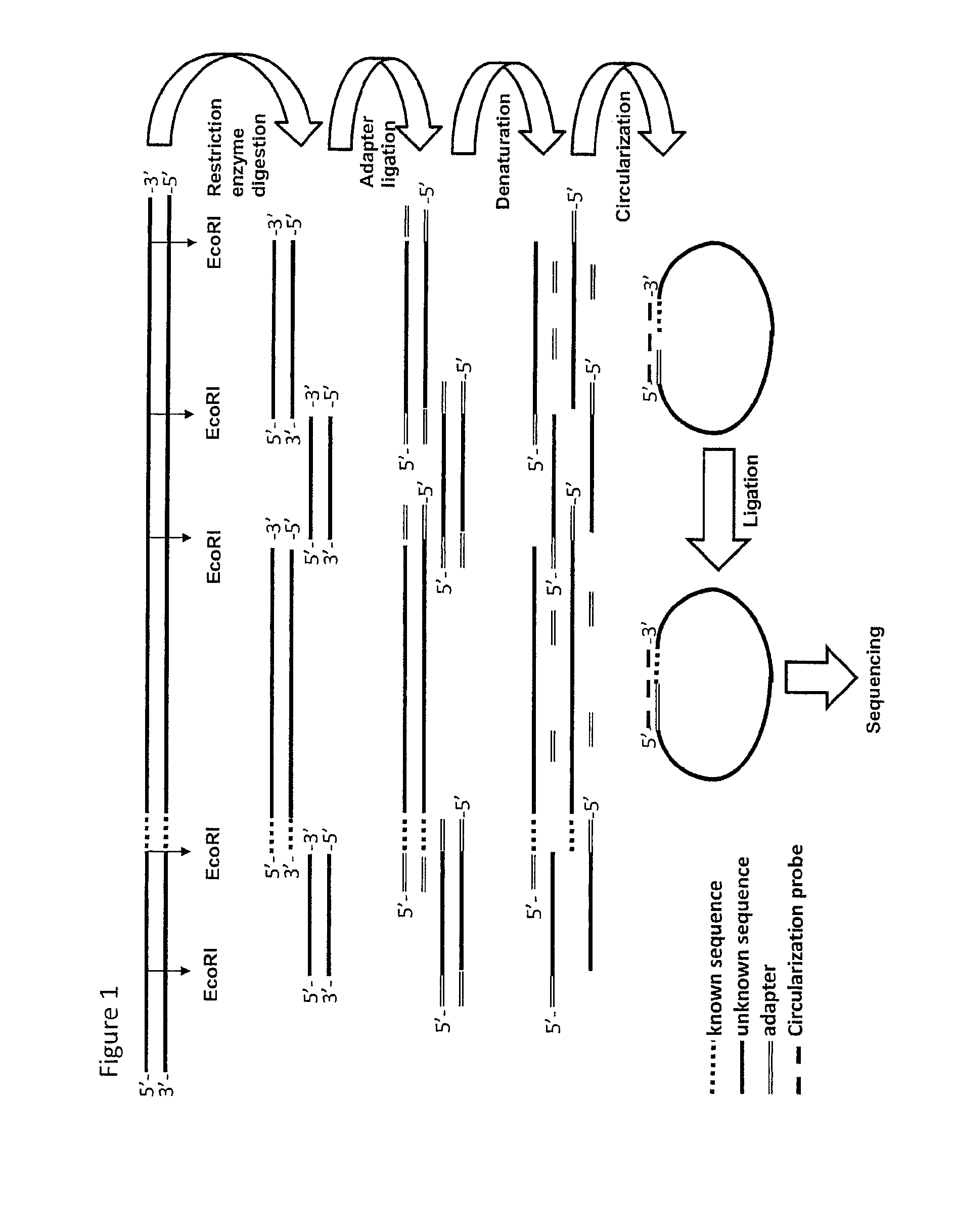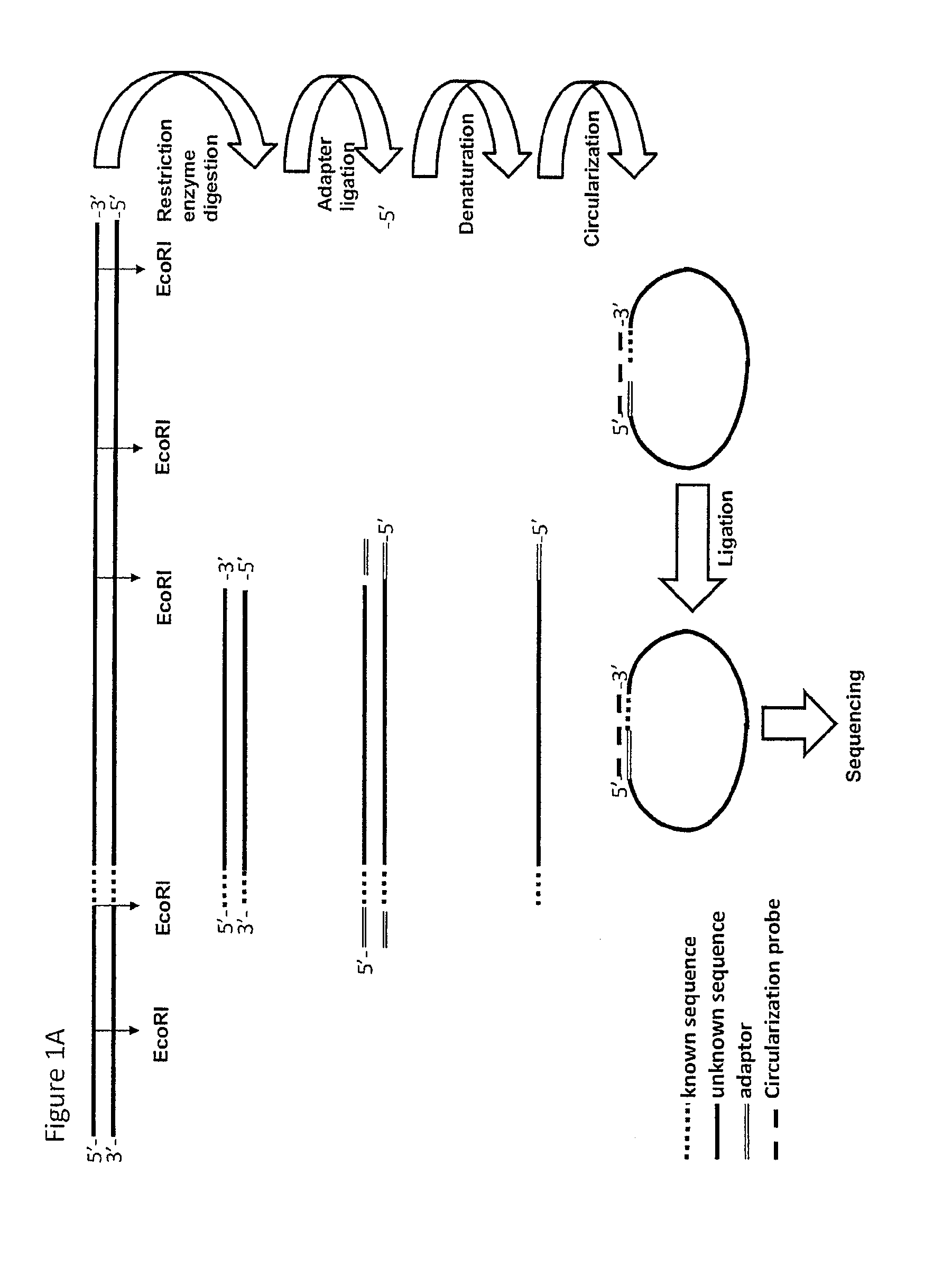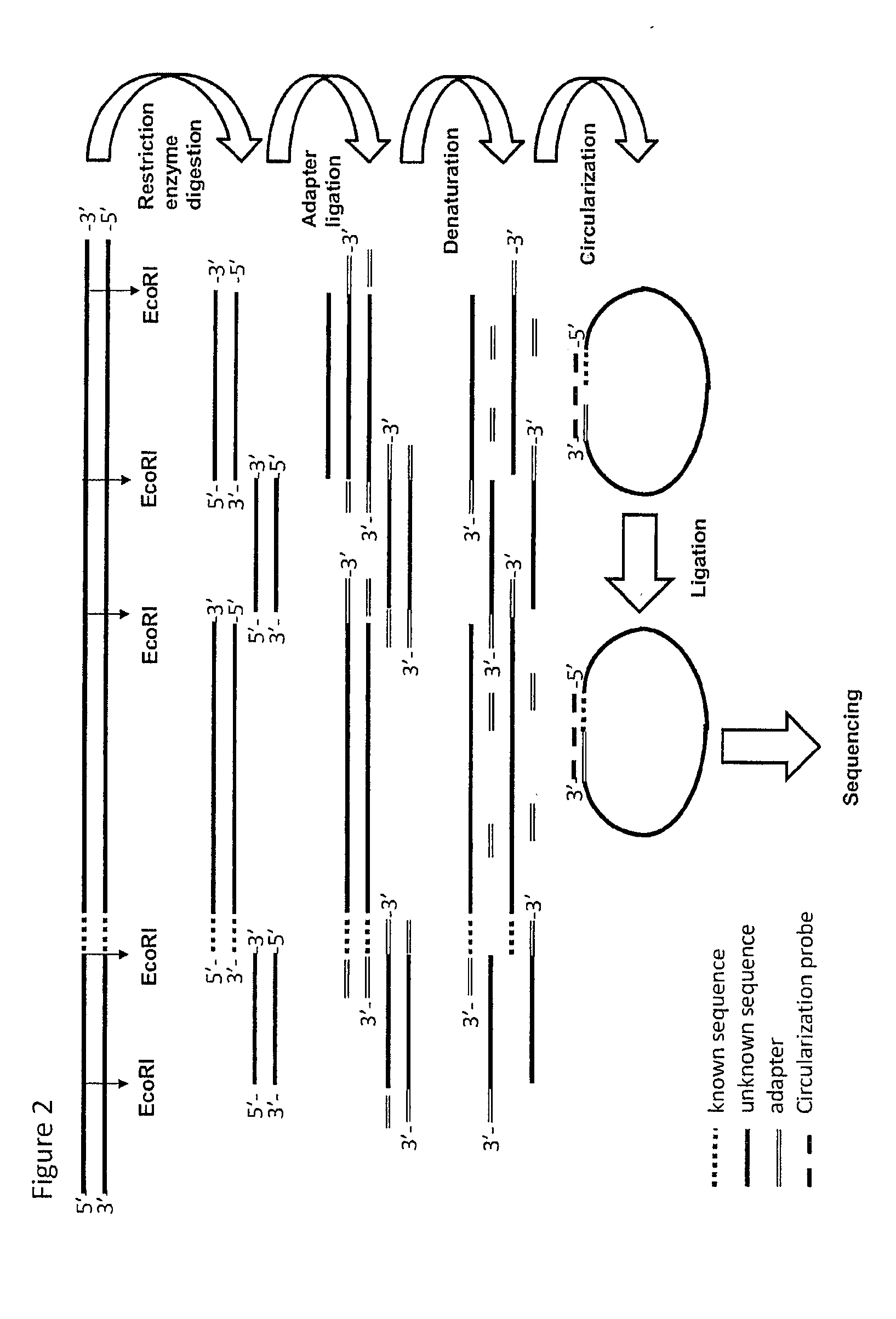Method for targeted sequencing
- Summary
- Abstract
- Description
- Claims
- Application Information
AI Technical Summary
Benefits of technology
Problems solved by technology
Method used
Image
Examples
example 1
Targeted Sequencing Using Sequence Tags
[0228]Protocol
[0229]The approach contained the following steps:
[0230]1 Restriction Ligation (RL) of Genomic DNA
[0231]An EcoRI restriction was performed on 500 ng DNA material and a modified EcoRI adaptor was ligated on the 3′ ends of the EcoRI fragments. EcoRT was used, as the tags from the physical map used were generated with EcoRI. However, in principle any restriction enzyme can be used.
[0232]2 Circularization and Ligation Using a Pool of Tag Sequences
[0233]A mixture was made of 37 biotinylated primers containing 13 nucleotides complementing the EcoRI adaptor and 18 nucleotides complementing the tag sequence (circularization probe mix). Circularization reactions were assembled, denatured for 10 minutes at 95° C. and cooled down to 75° C. Ligation mix containing thermo stabile ligase was added and the temperature was lowered overnight to 45° C. creating a complex of biotinylated circularization probe with circular ligated specific tag-EcoRI ...
example 2
Targeted Gap Filling in Maize
[0246]Protocol
[0247]The approach contained the following steps:
[0248]1 Fragmentation of Genomic DNA
[0249]500 ng genomic DNA material was fragmented to ˜10 Kbp using g-TUBE™ (Covaris®) fragmentation. The DNA ends were repaired (blunted) and a 3′ A nucleotide was added (=dA tailing). A modified adaptor was ligated to the 3′ ends of the fragments.
[0250]2 Circularization and Ligation Using a Pool of Tag Sequences
[0251]A mixture was made of 119 biotinylated oligonucleotides containing 18 nucleotides complementing the adaptor and (on average) 17 (range=13-23) nucleotides complementing the known sequence flanking the gap with unknown sequence in the selected genomic sequence region (circularization probe mix). Circularization reactions were assembled denatured for 10 minutes at 95° C. and lowered to 45° C. overnight. Ligation mix containing thermo stabile ligase and a DNA polymerase (having 3′-5′ exonuclease activity but lacking strand displacement activity and...
PUM
| Property | Measurement | Unit |
|---|---|---|
| Tm | aaaaa | aaaaa |
| temperature | aaaaa | aaaaa |
| pH | aaaaa | aaaaa |
Abstract
Description
Claims
Application Information
 Login to View More
Login to View More - R&D
- Intellectual Property
- Life Sciences
- Materials
- Tech Scout
- Unparalleled Data Quality
- Higher Quality Content
- 60% Fewer Hallucinations
Browse by: Latest US Patents, China's latest patents, Technical Efficacy Thesaurus, Application Domain, Technology Topic, Popular Technical Reports.
© 2025 PatSnap. All rights reserved.Legal|Privacy policy|Modern Slavery Act Transparency Statement|Sitemap|About US| Contact US: help@patsnap.com



